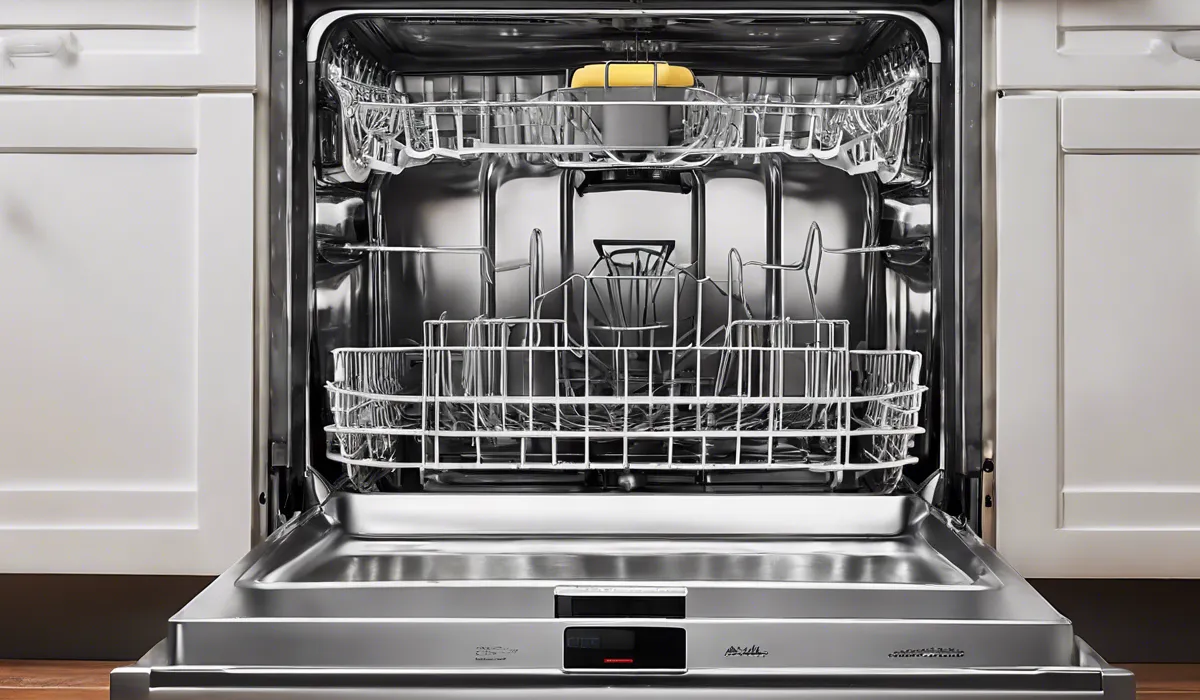How to Tell if Dishwasher Heating Element is Bad: Quick Diagnosis
To determine if a dishwasher heating element is bad, check for visible damage like blisters or cracks. Use a multimeter to test for continuity; if there’s no continuity, the element needs replacing. Additionally, if dishes aren’t drying or the dishwasher isn’t reaching high temperatures during cycles, the heating element may be faulty.
Signs of a Faulty Dishwasher Heating Element

Dishes Aren’t Hot After a Cycle
If you’ve noticed that your dishes are no longer warm to the touch after running a dishwasher cycle, it could signal that the heating element is not functioning properly.
The heating element in a dishwasher is responsible for raising the water temperature during the wash and rinse cycles, and for drying the dishes at the end of the cycle.
If dishes remain cool, it suggests the element isn’t activating or heating as it should.
Poor Cleaning Results
When the heating element is faulty, the dishwasher may not clean dishes effectively.
Hot water is essential for dissolving detergent and sanitizing dishes, so if the element isn’t heating the water sufficiently, you may find food residue or soap scum on your dishes after washing.
This is a clear indication that the element might not be working correctly.
Visible Signs of Damage
Occasionally, a visual inspection can reveal problems with the heating element. Look for signs of damage such as burn marks, melting, or cracks on the element itself.
Any such visible damage is a definite sign that the element requires attention, and most likely, replacement.
No Steam When Opening the Dishwasher
Typically, when you open your dishwasher immediately after a cycle, you should see steam escaping.
This is because the heating element works during the final rinse to elevate the temperature, which aids in drying the dishes. A lack of steam could indicate that the element is not heating the water at the necessary high temperatures.
Dishwasher Takes Longer Than Usual to Complete a Cycle
If your dishwasher is taking longer than usual to complete a cycle, it could be struggling to reach the required temperatures due to a faulty heating element.
The dishwasher may repeatedly try to heat the water, thus extending the duration of the cycle, which is not only inconvenient but also a waste of energy.
Testing the Dishwasher Heating Element

Safety Precautions Before Testing
Before attempting any tests on the heating element, ensure the dishwasher is turned off and unplugged from the electrical outlet to avoid any risk of electric shock.
Additionally, turn off the circuit breaker connected to the dishwasher for added safety. Always consult your dishwasher’s manual for model-specific instructions and safety guidelines.
Locating the Heating Element
The heating element in a dishwasher is usually located at the bottom of the machine. Removing the bottom rack will typically provide you with a clear view and access to the element, which usually resembles a thin, looped metal rod.
Visual Inspection for Breaks or Blistering
Conduct a thorough visual inspection of the heating element. Look for any obvious signs of damage, such as breaks, cracks, or blistering on the surface.
If you observe such defects, this is a strong indication that the element is compromised and will likely need to be replaced.
Using a Multimeter to Test for Continuity
A multimeter can be used to test the heating element’s continuity, which will tell you if a continuous electrical path is present in the element.
Set your multimeter to the ohms setting and touch each probe to the element’s terminals. A reading that shows no continuity is a clear sign that the element is faulty and unable to conduct electricity properly.
Checking for Electrical Faults
While testing for continuity, you should also check for any electrical faults. If the multimeter indicates a very low resistance reading, this could mean there’s a short in the element.
Conversely, a very high resistance reading might suggest an open circuit within the element. Both scenarios require the element to be replaced.
Replacing the Dishwasher Heating Element
When to Consider Replacement
Consider replacing the heating element if your tests indicate no continuity, or if there are visible signs of damage.
Additionally, if troubleshooting other components does not resolve the issues you’re experiencing, such as dishes not drying or poor cleaning results, it may be time to replace the element.
Tools and Materials Needed for Replacement
Before starting the replacement process, gather all necessary tools and materials. You’ll typically need a screwdriver, a wrench, a multimeter, and the new heating element.
Ensure you have the correct replacement part by checking the model number of your dishwasher and the specifications of the heating element.
Step-by-Step Guide to Removing the Old Element
To remove the old heating element, first disconnect the dishwasher from the power source and shut off the water supply.
Unscrew the fasteners holding the element in place, carefully disconnect the wires attached to the element terminals, and then gently remove the element from its housing.
Installing the New Heating Element
Position the new element where the old one was located, ensuring it’s properly seated in its housing.
Reconnect the wires to the terminals, making sure they are secure, and then screw the element back into place. It’s crucial to follow the manufacturer’s instructions to ensure a proper fit and function.
Testing the Dishwasher After Replacement
After installing the new heating element, restore power to the dishwasher and run a test cycle.
Check to ensure that the dishes are hot after the cycle and that there is steam when opening the door. If the dishwasher operates as expected, the replacement has been successful.
FAQs About Dishwasher Heating Element Issues
How can I visually inspect my dishwasher heating element for damage?
To visually inspect the heating element, look for blisters, cracks, or any signs of physical damage on the surface of the element.
What tool do I need to test the dishwasher heating element for continuity?
To test for continuity, you will need a multimeter set to the ohms (Ω) setting.
What does it mean if my multimeter shows no continuity for the heating element?
No continuity on the multimeter indicates that the heating element is faulty and needs to be replaced.
How can I tell if my dishwasher heating element is bad without using a multimeter?
If your dishes are not drying properly or the dishwasher isn’t reaching high temperatures during cycles, this could be a sign of a bad heating element.
What should I do if I suspect my dishwasher heating element is faulty?
If you suspect the heating element is faulty, you should contact a professional technician for a thorough diagnosis and potential replacement.
Final Thoughts
Checking for visible damage such as blisters or cracks can indicate a bad dishwasher heating element.
Conducting a continuity test with a multimeter is crucial; a lack of continuity signifies a need for replacement. Also, poor dish drying or insufficient temperature during cycles suggests a potential fault in the heating element.





